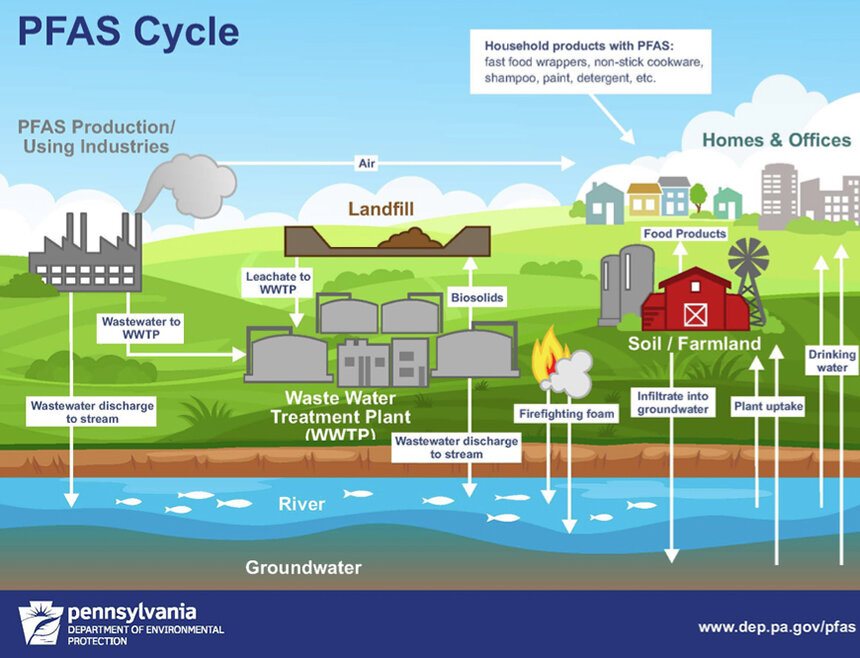State Orders 6-10 Developer to Remove Toxic Fill
September 17, 2020
PROVIDENCE — The primary developer of the 6-10 Connector highway project must remove a pile of fill and all other soil tainted with hazardous waste within the extensive construction site.
The recent directive came after heavy-equipment operators complained of excessive dust at worksites for the $410 million redevelopment project west of downtown. When pleas for help weren’t addressed by the developer and state agencies, the union for those workers launched its own investigation.
A test paid for by the International Union of Operating Engineers Local 57 found the material contained two times the acceptable levels of carcinogenic aromatic hydrocarbons and four times the acceptable levels of benzo(a)pyrene, another carcinogen.
A union employee followed the dump trucks and monitored radio discussions between drivers to determine that the 6-10 fill material was hauled in from railway transit projects in Pawtucket and Jamaica Plain, Mass.
The Rhode Island Department of Transportation (RIDOT) said it’s not uncommon or illegal for a contractor to bring material to a site as long as it meets the requirements of the soil management plan.
A test of material in 2019 at the site for the Pawtucket/Central Falls commuter rail station and bus hub project found excessive levels of arsenic and toxic polycyclic aromatic hydrocarbons.
The developer, Barletta Heavy Division Inc., hasn’t responded to requests for comment left at its headquarters in Canton, Mass., and at an office in Providence. The company told RIDOT that all of the suspect fill came from the MBTA Orient Heights Station redevelopment project in East Boston, a $26.3 million project Barletta oversees. RIDOT maintains that all of the material removed from the Pawtucket/Central Falls project has been properly disposed.
RIDOT said it’s too early to determine if any fees or fines will be assessed. Barletta has been asked to pay for removal costs. The test results were recently made public. They can be seen here and here. Summaries of the results also were recently released. They can be seen here and here. Unacceptable levels of arsenic, barium, copper, and lead, among other substances, were found.
The public-health alarm was raised by Local 57 president James White, after Barletta ignored requests to use water trucks to curtail the dust. White found that the fill contained debris from rail yards, such as fragments of wooden railroad ties, spikes, and stone bedding.
After receiving contradictory test results from Barletta and Local 57, a new test, conducted Sept. 12 by RIDOT’s consultant and DEM site remediation program managers, found the material near the city’s Olneyville neighborhood to be contaminated. The neighborhood is already an environmental-justice zone.
Barletta must remove the 2,500-cubic-yard pile next to a ramp for Plainfield Pike, a smaller pile of back fill, and any other hazardous material at the construction site and have it brought to a licensed disposal facility. No additional fill will be allowed at the site from other remediation projects, according to state officials.
Barletta will only be allowed to use fill that has been verified to have come from known in-state gravel bank operations, according to RIDOT.
DEM said it will only permit fill that meets health standards. The material may either be used directly or mixed with soils unearthed within the boundaries of the 6-10 project.
White said he is very happy with the outcome, so far.
“They have to remove all the soil that is brought in, not just the pile,” he said.
The problem may not be over for Barletta, as State Police are investigating White’s whistleblower complaint. DEM plans to keep its review open. GoLocalProv has reported that a federal investigation has been launched.
“DEM is continuing our investigation into the handling of soils for this project and cannot comment further on that aspect of this case,” DEM director Janet Coit wrote in a statement.
Before the 6-10 Connector redevelopment project began in 2018, RIDOT stressed the need for a soil management plan to address more than 100 years of industrial and vehicle contamination. The original 6-10 Connector was built in the 1950s.
To address the problem, soil excavated during the construction of the new connector is being segregated into clean material and contaminated material that will be disposed off-site. The excavated soil is stored in temporary stockpiles in fenced properties and covered pending reuse or shipment off-site. Some soil is reused as fill under the highway.
The five-year 6-10 reconstruction is the largest project in RIDOT’s history. Nine bridges that make up the interchange between interstates 295, 95, and 195 will be rebuilt. Shared-use bicycle and pedestrian paths will be added to portions of Route 10 that are lowered to ground level.



